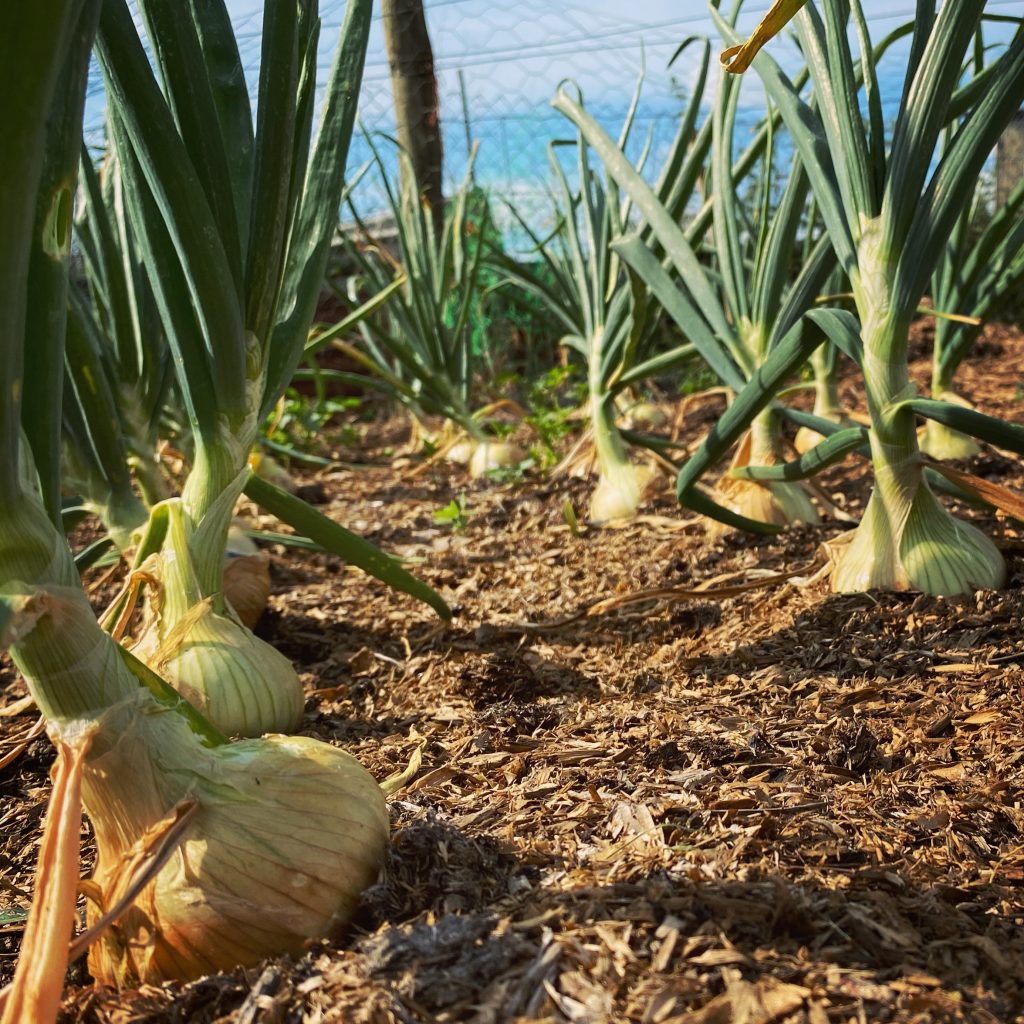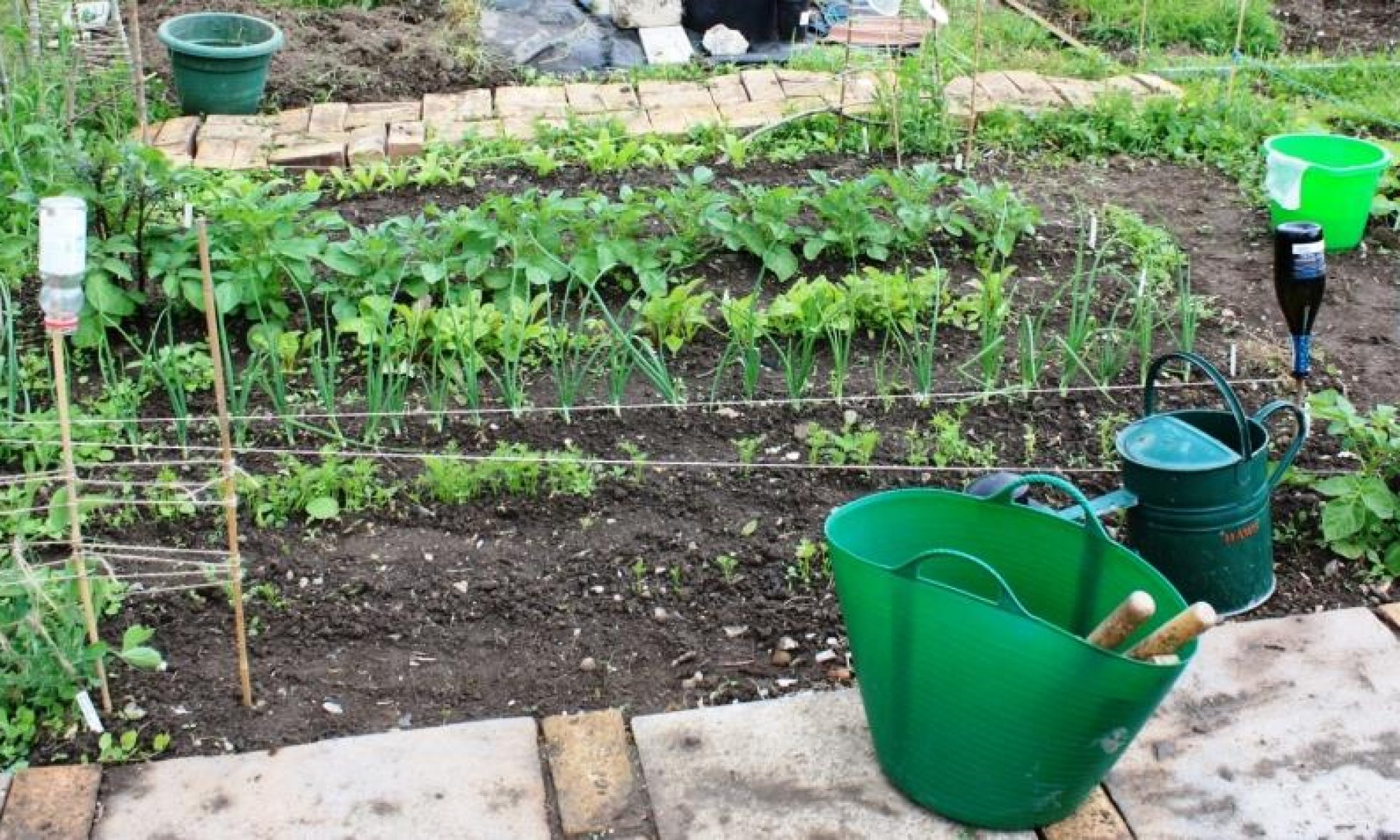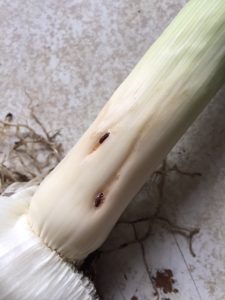In the past, I had not been successful with onions or leeks because of the allium leaf miner. The adult flies appear from March to April and September to October and will feed on the leaves of your allium plants before laying her eggs. It attacks all members of the allium family. You can tell the female fly has fed on your leaves because you will see lines of white dots on the leaves on your alliums. The eggs will hatch and become larvae (small maggots) that will tunnel in the foliage, stems and bulbs of the allium plant exposing the plant to diseases and rotting.
So at the end of last year I thought I would protect my plants using insect mesh to stop the allium fly laying eggs on my allium plants. Back in October last year Monty Don on Gardeners’ World said to try planting onion sets in modules in the greenhouse as it will give the onions a head start and avoid cold and wet weather. I knew the allium fly would be unable to access the onions in the greenhouse over winter so I gave it a try.
In April, when the soil had warmed up, I decided to plant the onion plants out. I knew the allium fly could lay her eggs in April so I covered it with insect mesh (which is available at the BALGA Members’ shop).
Finally, it was a success! Have a look at the picture below:

Remember, there is no chemical available that will stop the allium leaf miner so it is best to use insect mesh in March-April and September-October. Perhaps you can try starting your onions in modules this year? It could give you a head start to the season next year and harvest onions early than usual!
Miles



